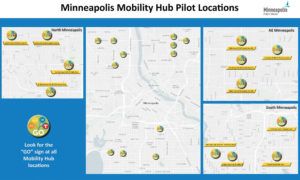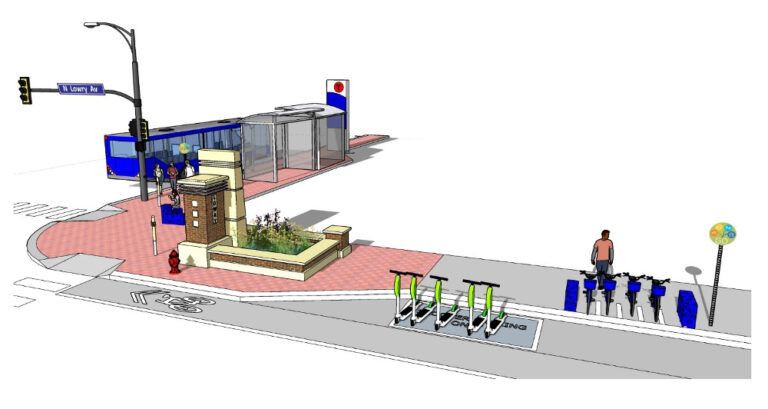As part of its long-term initiative to help address climate change through a reduction of greenhouse gas (GHG) emissions caused by fossil fuel-powered vehicles, the City of Minneapolis has launched a mobility hub pilot program to increase access to low-carbon transportation options.
The city’s new mobility hubs provide easy public access to convenient, low or no carbon transportation options, including transit, shared scooters and Nice Ride bicycles. The three-month long pilot program will inform a long-term plan to implement a larger mobility hub network in Minneapolis. The pilot is beginning with four locations in north Minneapolis and will continue with additional locations in the city’s south and northeast regions later this year. The City of Minneapolis is collaborating with Metro Transit, Hennepin County, new mobility service providers, and neighborhood organizations on the pilot. During the pilot program, staff from the city and partner organizations will be at the mobility hubs at select times to collect customer feedback and provide education on the new transportation options. The hubs will be marked with a ‘Go’ sign, feature street furniture and wayfinding signs to points of interest.
The city’s mobility hub pilot program is supported by the city’s participation in the Bloomberg Philanthropies’ American Cities Climate Challenge, a two-year program that provides cities with new resources to tackle carbon reduction goals. The new bus lanes on Hennepin, Chicago and planned for Nicollet Avenue are also supported by the program. Lessons learned from both pilot programs will inform work on the Minneapolis Transportation Action Plan, a 10-year plan to implement the transportation visions outlined in the Minneapolis 2040 Comprehensive Plan.
Minneapolis has set a bold goal of reducing its GHG emissions by 80% by the year 2050. With exhaust gasses from transportation currently accounting for approximately 26% of carbon emissions, and even with the adoption of electric cars, Minneapolis will need to reduce automobile passenger miles by 38% to reach its reductions goal. To reach its citywide targets, it aims to both dramatically and subtly change how its citizens move around. The city is currently embarking on a major program to improve options for transit, walking and bicycling, and accelerating its electrification of vehicle fleets, while supporting projects aimed at reducing miles traveled in vehicles.





